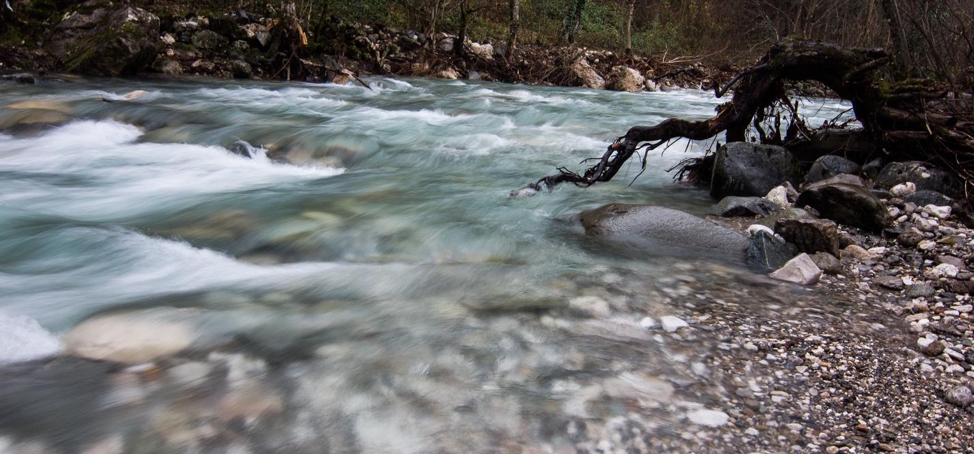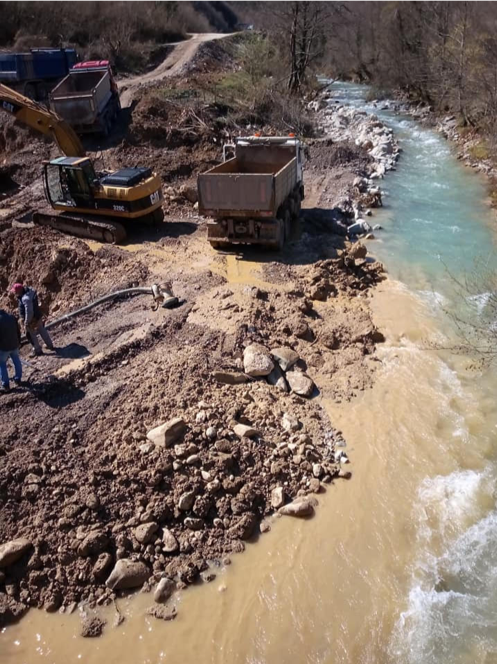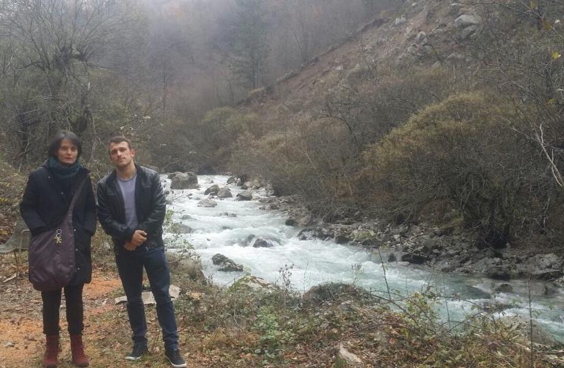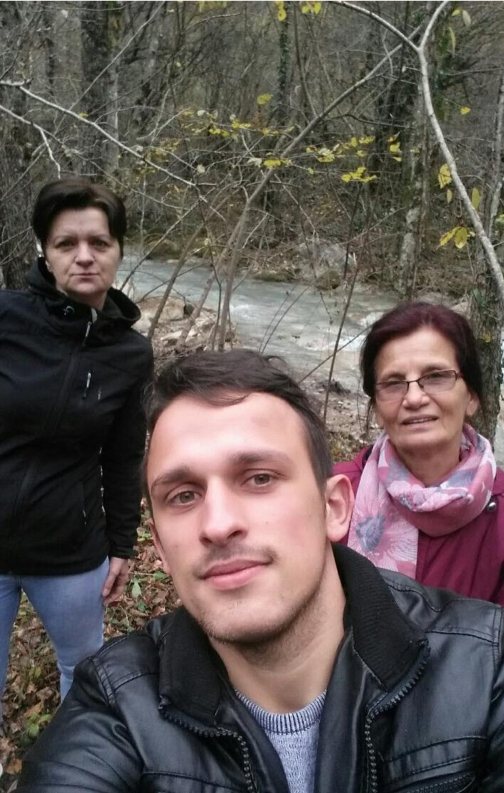Young Doljanka River Defender Needs Your Help
Figure 1 Photo of the Doljanka River by Anes Podic.
First, a bit about the initiative. The Bosnia River Action Network Advocacy (BRANA) in Bosnia and Herzegovina seeks recognition of rights for the beautiful Doljanka River, one of the few wild rivers left in Europe and now threatened by a hydropower plant. Members of BRANA include Earth Law Center (ELC), Eko akcija (“eco action”) and Gotusa.
Read more about the initiative on ELC’s blog here.
Intro to the Doljanka River
The Doljanka is a tributary of Neretva river in North Herzegovina, Bosnia and Herzegovina.
Running for about 18 kilometers and reaching an altitude of about 400 meters, it arises from sources on the far northeast slopes of Vran mountain. It runs through a limestone canyon and flows through the village of Doljani.
The Doljanka flows into the Neretva River between Jablanica and Mostar, and provides critical passage to spawning trout from the Neretva river. Its riverbed is both rocky and sandy, which shelters brown trout and its natural food sources. The difference in water level in summer compared to winter is quite large.
Dinaric karst water systems, of which the Doljanka is part of, support 25% of the total of 546 fish species in Europe, many endemic – found only here and nowhere else in the world.
The Neretva River, together with four other areas in the Mediterranean, has the largest number of threatened freshwater fish species. Multiple fish species are geographically limited, thus more vulnerable, so they are included on the Red List of endangered fish as of 2006.
The Adriatic basin has 88 species of fish, of which 44 are Mediterranean endemic species, and 41 are Adriatic endemic species. More than half of the Adriatic river basin species of fish inhabit the Neretva, the Ombla, the Trebišnjica, the Morača Rivers and their tributaries, and more than 30 are endemic.
Threat of hydropower: the fake green energy
Figure 2 Destruction of the Doljanka River.
Did you know that hydroelectric dams create more greenhouse gas than coal-fired power plants? Dams cause organic material—vegetation, sediment and soil—to stagnate and decompose I reservoirs thus releasing methane and carbon dioxide. into the water and the air throughout the generation cycle.
Philip Fearnside, a research professor at the National Institute for Research in the Amazon, in Manaus, Brazil, and one of the most cited scientists on the subject of climate change, has called these dams “methane factories." And, according to Brazil's National Institute of Space Research, dams are “the largest single anthropogenic source of methane, being responsible for 23 percent of all methane emissions due to human activities."
Because of their disastrous impact on river ecosystems and species. Some experts hold that dams cause climate change. Dams drain and dry up downstream wetlands that are “carbon sinks" holding vast amounts of greenhouse gases in soils. This draining and dry-up causes additional carbon and methane to be released and emitted into the air.
The project to build a hydropower plant on the Doljanka River has met with fierce local community resistance. Dženan Šašić, 22, has made it his life’s work to defend and protect the natural environment. BRANA speaks with Dženan so you can hear from him directly.
So tell us a little bit about yourself?
Figure 3 Dženan and Svjetlana Nedimovic by Doljanka River. Photo by Dzenan.
Dženan: I earned my Bachelor degree in Information Technology and currently work in Sarajevo as a back-end developer. I was forced to leave Jablanica because the local authorities absolutely did not like what I was doing. Nevertheless, I come home every weekend.
My brother and father work in Slovenia as drivers. They [the local authorities] threatened me the night before the protest, and even before they heard about the initiative. I was getting messages that they would knock my head off and I'd be thrown in Doljanka. They sent messages to Father that the darkness would eat him.
What's the history of your family with this river?
Over 100 years ago, my family settled on the banks of the Doljanka. I am the fourth generation to live by this river.
In addition to bathing, the river provided us with water for crops. When I was a boy, my father was forced to leave Bosnia due to lack of work. Every time he comes here, if the weather is nice, we spend time on the Doljanka.
Now, my father intends to return to Bosnia for good and spend his retirement by the Doljanka, the plans for construction of the hydropower plant could deprive him of that.
How did you come to be defending the Doljanka River?
I conducted a petition in two local communities adjacent to the Doljanka river. The conclusion was that local people oppose the construction. But this was just to discover the mood of people.
Later I found out what different experts, ecologists, ichthyologists, geographers, mechanical engineers, and lawyers thought. Pretty much every media outlet in Bosnia and Herzegovinia reported around how problematic the construction of small hydropower plant is. This is not just anecdotal.
Currently, I serve as the coordinator for the civil society nonprofit Association for the Doljanka River and the NGO has data on how detrimental this project is to the health of the river and its inhabitants.
Can you share with us something unique and personal about the river that others might not know?
Figure 4: Dzenan with Amela Krnjic, Naza Spahic
A former coach of the French soccer club Paris Saint-Germain and current coach of Nantes is a resident of the village Jelačići, whose population has signed the petition and is actively fighting against the small hydropower plant. He grew up on the Doljanka river. Last time I saw him there swimming in the summer of 2012. This is a man who can spend his vacation anywhere in the world and yet he decides to spend it right here, on Doljanka.
During the summer, children spend the holiday at Doljanka. The elderly gather on weekends. Every year, people from the village gather at the river and hang out together. Doljanka is the most popular destination on the Labor Day.
What is the impact if the hydropower plant construction is allowed to continue?
The hydroelectric power plant will deny us the use of potable water, farming, it will result in the disappearance of fish stocks. Countless endangered species, not found anywhere else will disappear from the world.
It will also deprive the people in the village of their main summer pastime and endanger my community. Studies have found that these hydropower plants are really not that green, and in addition to creating standing water, decreasing oxygen levels, depriving fish of enough water – they can also add toxins to the food we grow and eat.
What gives you hope?
People around me. They are heroes. On several occasions, they blocked the machines with their bodies. They are not afraid of the authorities, or the system; what interests them is getting to truth and justice, and that's not easy at all.
Women are the most active in the association. I would highlight three of them — Amela Krnjić, Naza Spahić, Lejla Behrem and Zuhra Sarajlić. They are from three different generations. Lejla is a student of agronomy and is engaged in preparing of the letters to other environmental organizations. Amela is a middle-aged woman and spent a lot of time educating the Jablanica population about Mini hydropower.
A woman who is most fascinating with her energy and persistence is Naza. She is a former social worker and now retired, she is almost 70 years old. Every day she coordinates with lawyers and other legal organizations. The majority in the association are women. Recently, Svjetlana Nedimovic, a political analyst and social critic, visited them. She was also impressed by their courage.
What do you need help with?
Soon there will be court hearings, and we have filed a number of legal complaints. Since we have financed everything on our own so far, we have spent several thousand marks (USD1,000+), financial support would mean a lot to us and help us continue to defend our beloved river.
You can also sign the petition here to protect the Doljanka River, and share the news with your friends.
What's the one message you want to give to the world?
The truth must always be defended, by every authority. It is important to live and act honorably and honestly, fighting for rights that belong to all human beings. Water is one of the basic human rights so we must continually work towards environmental justice.




